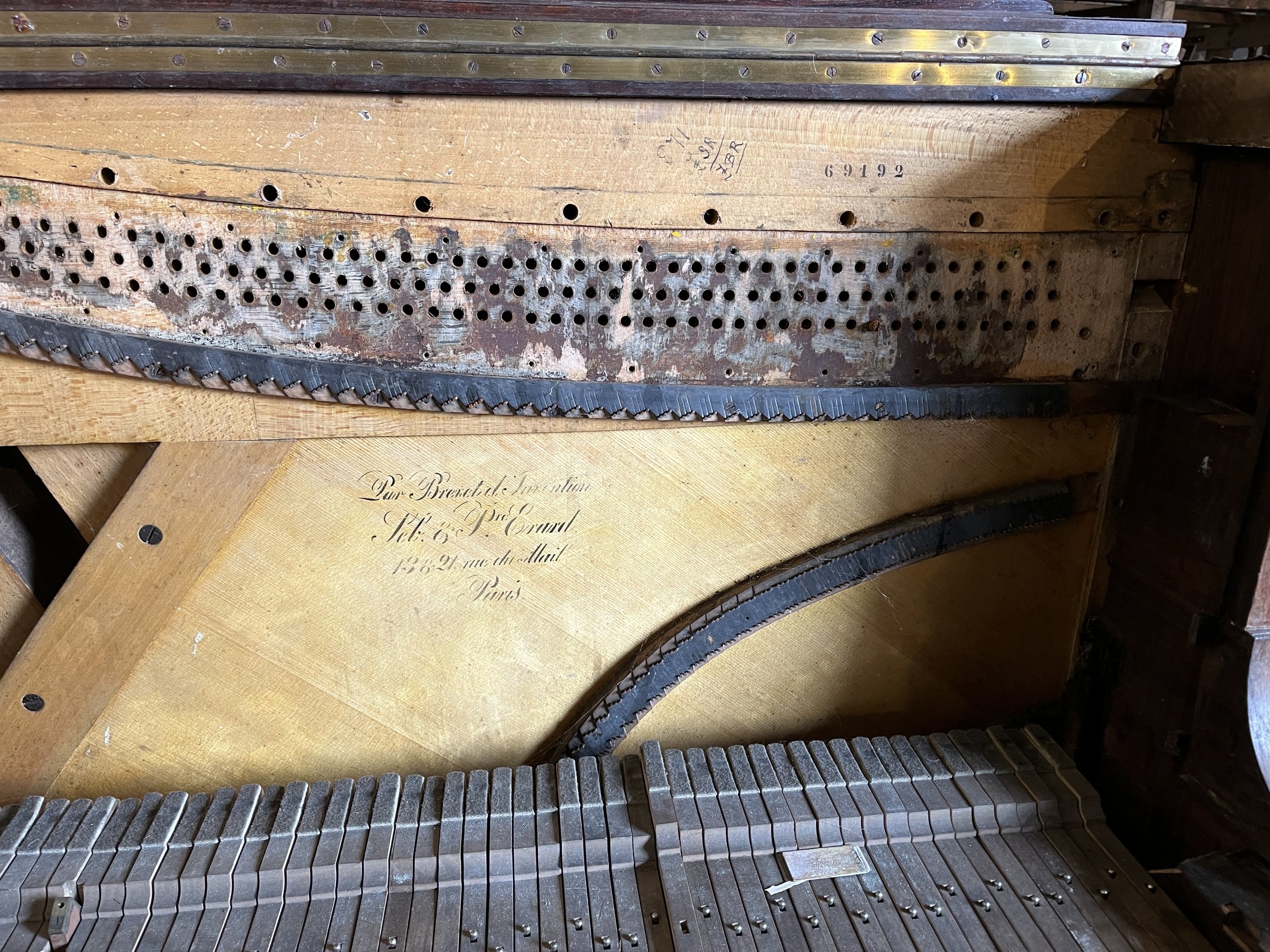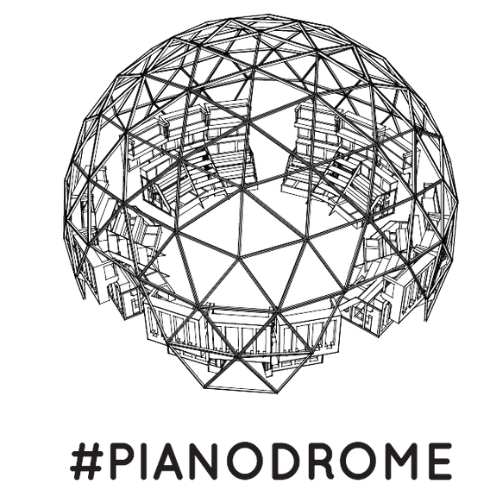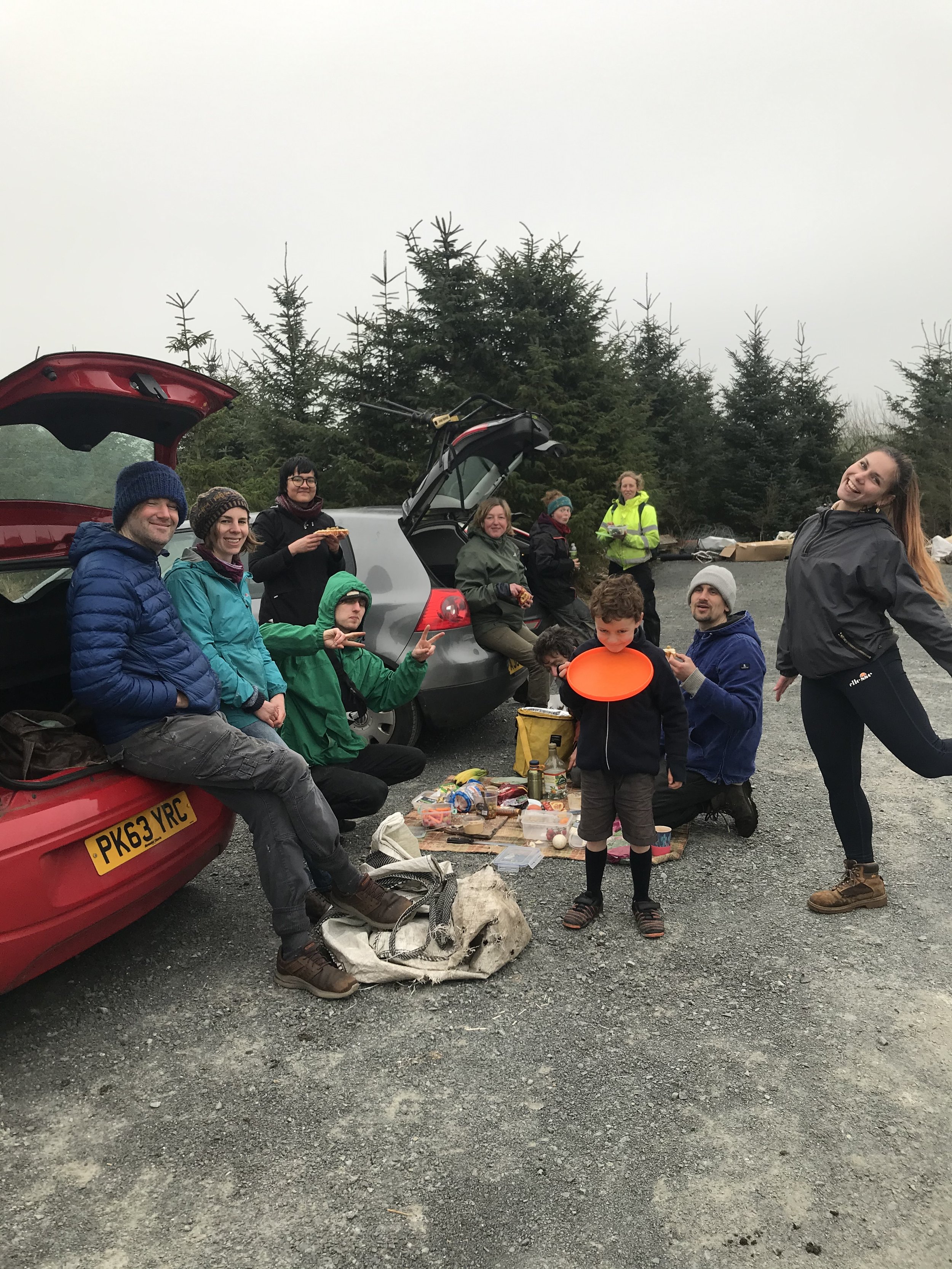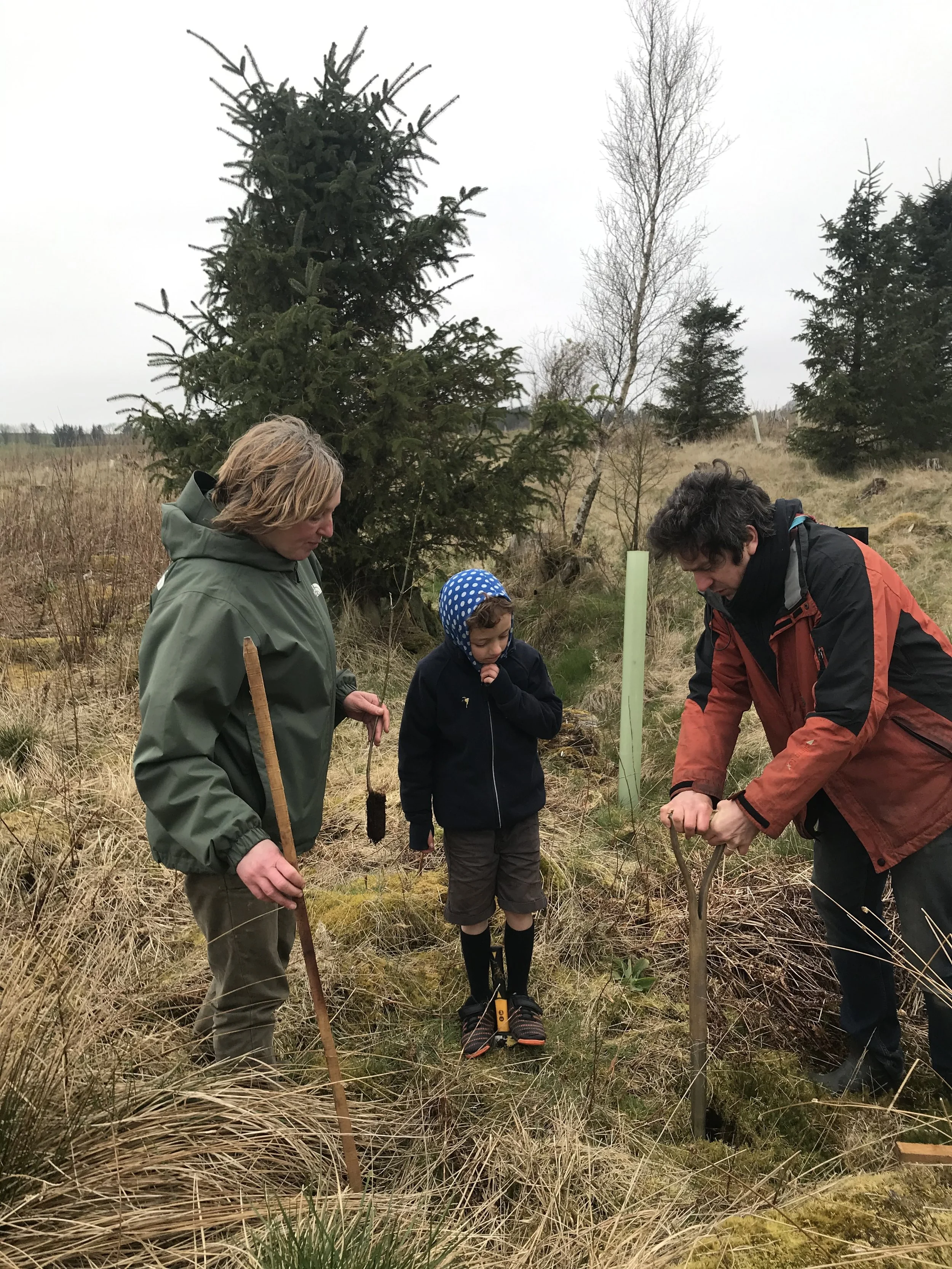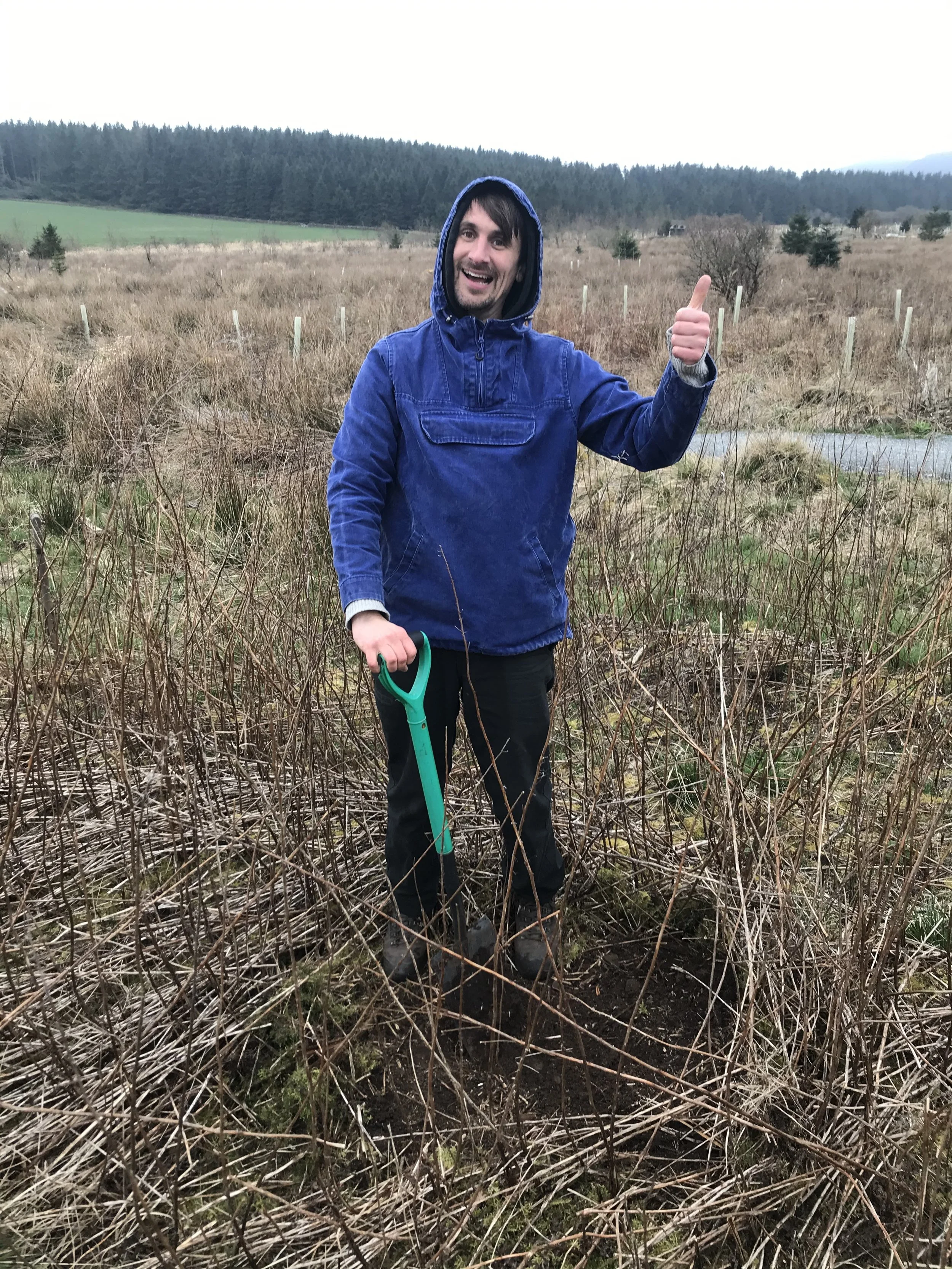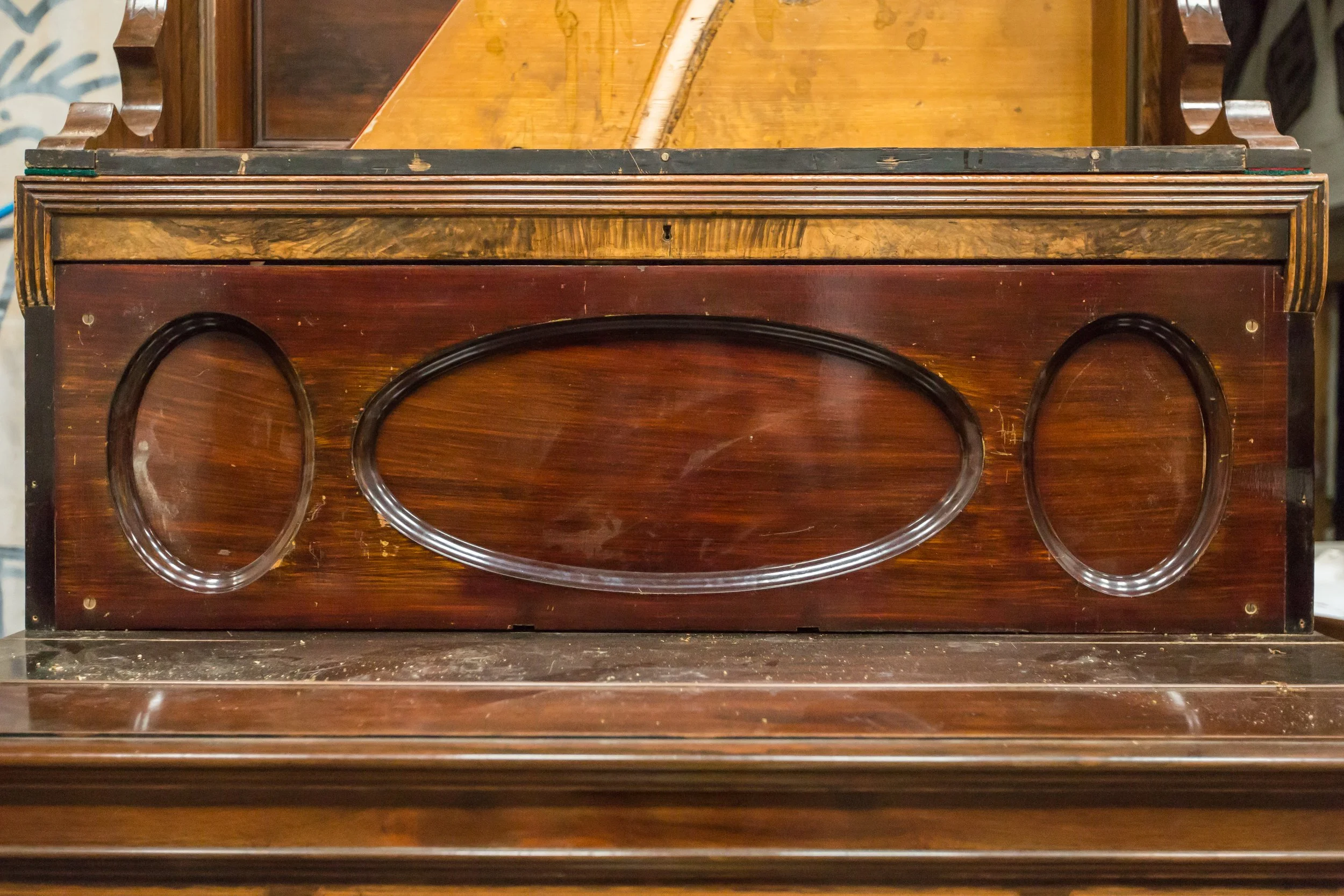
Pianodrome Blog
Piano action in words.
CO2
It strikes me as nothing short of miraculous that trees and humans are symbiotic in that we humans breathe in oxygen while trees breathe it out. The opposite is true for Carbon Dioxide (CO2). One species’ waste is another species’ resource. How about that for circular economy? It turns out that chlorophyll – the chemical that allows trees to store sunlight – is very similar to the haemoglobin in our blood. The two chemicals differ in that the iron in haemoglobin makes our blood red and the magnesium in chlorophyll makes the trees’ leaves green.
It strikes me as nothing short of miraculous that trees and humans are symbiotic in that we humans breathe in oxygen while trees breathe it out. The opposite is true for Carbon Dioxide (CO2). One species’ waste is another species’ resource. How about that for circular economy? It turns out that chlorophyll – the chemical that allows trees to store sunlight – is very similar to the haemoglobin in our blood. The two chemicals differ in that the iron in haemoglobin makes our blood red and the magnesium in chlorophyll makes the trees’ leaves green.
Haemoglobin delivers the oxygen we breathe in, allowing the carbon in our food to give us energy while chlorophyll allows trees to store energy from the sun while separating CO2 into the solid carbon in wood and the oxygen which they breathe out. Or something like that. Is that not mind-blowing? The mass of a tree comes largely from the air. Trees breathe in CO2 and turn it into wood.
In an attempt to offset our Charlotte flights, last Saturday a group of volunteers from Pianodrome planted 100 new trees at North Cloich hutting site in the Scottish Borders. One flight from Edinburgh to Charlotte produces around 490kg of CO2 so for a return it’s about a tonne.
To put this in context, the total average Carbon footprint per person in the UK including all travel, food, heating, infrastructure etc. is around 8 tonnes of CO2 per year. For the 6 return flights required to make this project happen Pianodrome produced around 6 tonnes of CO2.
Funnily enough Pianodrome Charlotte probably weighs around 6 tonnes so flying the build team over produced roughly an equivalent weight of Carbon Dioxide gas to the 40 or so pianos used in its construction. Heavy. Had these pianos been burned instead would this have produced as much CO2? But that's another question.
My question now is this: How long will it take for the trees we planted to breathe in the equivalent 6 tonnes of CO2 we produced and turn it into living timber?
Based on an hour’s googling my possibly flawed and highly approximate calculation is as follows: 6 tonnes of CO2 is roughly equivalent to 1.5t of Carbon (the other 4.5t is Oxygen). Divided between 100 trees that’s 15kg of Carbon per tree we planted. About half of the mass of a tree is Carbon therefore our trees will have to weigh 30kg each before collectively they have offset our flights. A tree weighing 30kg is around 12cm measured round its trunk. To grow to this size takes about 5 to 10 years.
On our weekly zoom meeting today Laura suggested we arrange a picnic at North Cloich to celebrate when the trees we planted have done their job of offsetting the Charlotte flights. Matt suggested we cycle there to reduce our carbon emissions on the day. So. On 22nd April 2033 you are all invited to cycle to North Cloich with us and have a picnic in the shade of our lovely trees!
One last calculation. A mature tree absorbs around 50g CO2 per day. Flying Edinburgh to Charlotte takes about half a day. To absorb CO2 at the same rate that your flight releases it on your behalf you need a forest of 10 000 trees. When I picked my 10 year old up from school today and told him all this he immediately jumped to the only conclusion I can meaningfully extract from this – we, humans, surely have to stop flying.
Pianodrome Charlotte, North Carolina
The first Pianodrome in the US. When Robert Krumbine the creative director of Charlotte Shout festival asked at the Pianodrome at the Pitt in 2019 'how do we make a Pianodrome' I think I said 'you just need to start by getting a warehouse and filling it with pianos'. Well now they have a warehouse and 40 something pianos and for the next three weeks they also have me.
When Robert Krumbine the creative director of Charlotte Shout festival asked 'how do we make a Pianodrome' at the Pianodrome at the Pitt in 2019, I think I said: 'you just need to start by getting a warehouse and filling it with pianos'. Well, now they have a warehouse and 40 something pianos and for the next three weeks they also have me.
According to Google Flights which compares the carbon footprint of the various transatlantic routes on offer, my flight dispersed around 450kg, about two upright pianos worth or perhaps a very large concert grand, of CO2 into the atmosphere over the ocean to get me here. A geodesic ribbon of arctic guilt tethers me to my homeland 4000 miles away. I had better make this trip count. But my CO2, along with the 100 or so more tonnes required to fire the other couple of hundred passengers, their agglomerate baggage and the crew to serve and pilot them, the fizzy drinks, the inflight entertainment system, the hulk of the plane itself at close to the speed of sound half way across the globe, has surely already dissipated.
I felt sick. Not out of moral panic or, for that matter, any other kind of panic. I love flying despite the occasional dark spiral of the mind; 'what if we crash in the sea will I ever see my children again?' etc. I felt sick from the many-times recycled air, the unpredictable juddering, the noise, the cramped and sweaty-backed seat and the bright sun at night as we chased it west, never allowing it to set. Unnatural. Yuck. Man, was I glad to get off that plane.
Despite my moral misgivings and occasional physical discomfort I have already started to enjoy myself. There is an excitement in setting out your suitcase and your shoes the night before. Taxi in the dark to the airport. Orange-gold sunrise soaring through high, cold cloudscapes on invisible air. Breakfast at Heathrow. Shawn picking me up at Charlotte International and driving me to our air B and B in Rock Hill, South Carolina. Roads and trees. Lots of trees breathing the CO2...
And the arrival of my best man Quinn. I haven't seen him since my wedding 8 years ago but we still laugh into the night. He has flown from California so time-wise we are almost exactly out of sync. Since his Mum's house in Paradise CA burned down she has moved to Ashland Oregon (you couldn't make it up) where she helped an old bookseller set up shop with her insurance payout. Quinn has brought me a book. Creative Processes in the Human Environment. It fits perfectly with this project and with another book I was reading on the plane: 'Why we make things and why it matters'. What is a Pianodrome in fact? An interactive sculpture? A venue? A movement? An elaborate piece of furniture? As I understand it I am here to try to help to seed a creative community.
The Historic African Methodist Episcopal Zion Church where we are installing Pianodrome Charlotte is in the middle of a district where in the early 20th century this was at the centre of one of the most prosperous communities of people of colour in the world dubbed ‘Black Wall Street.’ In the 1950’s name of development hundreds of people of colour were forcibly rehoused to the suburbs to make way for a public park in a process which Robert described with sadness as 'predictable’. The Grace Church is one of only three historic buildings still standing. This feels like a complex and potentially volatile environment to be installing an interactive sculpture and a significant landmark culturally, geographically, architecturally and spiritually. Our lead builder here, Shawn, says the church and the Pianodrome are a 'match made in heaven' and I agree. But how does this translate to earthly reality?
Maybe music is the key? There is a Jazz bar next door which apparently has a good vibe and strong roots in local black communities. Also a choir associated with the church with gospel heritage may sing in our Pianodrome. Andrea Baker's 'Tales of Transatlantic Freedom' is touring the US on the back of her at the Old Royal High during the Edinburgh Fringe last summer. There are possibilities. And race is one of many axes on which diversity of the creative community may be measured.
It's getting light. The sun that finally got away over the horizon last night has already come back round this new day and caught up with us. Quinn gets up. He is three hours behind and I am five hours ahead. I am wearing the tattered remains of a Moroccan djellaba he gave to me 20 years ago as a night shirt and he takes a picture of me in our big garden where the trees line the freeway behind. I am looking into an oil drum where we might burn piano offcuts. He remarks that my white pointy hood makes me look a bit like an imperial wizard of the Klu Klux Klan. Rock Hill is where the railroad, the product of the life force of people enslaved to the empire of my ancestors once came to a full stop on the big rock that gave the town its name. Probably shouldn't wear that outside. Looking into the darkness of the drum and thinking back on the last 24 hours I wonder where I am and what my journey holds?
To my surprise and delight in the departure lounge of the Edinburgh airport I stumbled across, of all things, a smallish grand piano. Some 250kg of endless carbon-free entertainment for the assembled transitory anonymous. I took the opportunity to sit and improvise trying to be gentle so as not to jangle the nerves of my co-travellers this early in the morning. I was probably playing for nearly an hour. I finished with a couple of Bach preludes in C major and then C minor and when I had given way to a small child trying some bass notes I noticed, with a wry smile, the words on the purple circle on the floor which serves as the stage; 'haste ye Bach'.
A young woman who had come to sit nearby for most of my performance, a gesture which I had felt in some way conferred the freedom of the departure lounge on me, smiled and said 'thank you for this good time'. I thanked her in turn. This exchange marked for me, in a most subtle and powerful way, the start of my journey. Apt that it should be a piano, with its sequestered stories and carbon and its gift - the spark of creative connection - that should set me on my way.
